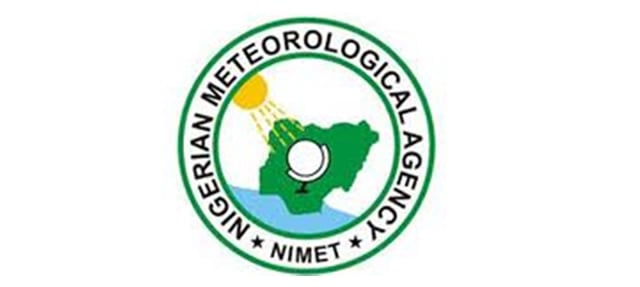Day 1: Monday – A Mix of Sunshine and Showers
Monday’s weather forecast across Nigeria presents a varied picture, with a combination of sunshine intervals and thunderstorms anticipated throughout the country. In the northern region, the day begins with isolated thunderstorms and light rain showers over Adamawa and Taraba. As the day progresses, these localized storms are expected to spread to other parts of the north, including Kaduna, Gombe, Kebbi, Zamfara, Bauchi, southern Borno, and Taraba. Meanwhile, the central region will experience a predominantly cloudy atmosphere punctuated by periods of sunshine. Thunderstorms with light rain are likely over Nasarawa, the Federal Capital Territory, and Niger in the morning, intensifying to moderate rain across most of the central region during the afternoon and evening. The southern region will also see a mix of clouds and sunshine, with the possibility of isolated thunderstorms bringing light rain to Ebonyi, Abia, Imo, Lagos, Delta, Bayelsa, Rivers, Cross River, and Akwa Ibom in the morning. These storms are predicted to develop into more widespread moderate rainfall across the south later in the day.
Day 2: Tuesday – Cloudy Skies and Isolated Thunderstorms
Tuesday’s weather forecast indicates a continuation of the cloudy conditions with intermittent sunshine across Nigeria. In the northern region, isolated thunderstorms are predicted, bringing light rain to Taraba and Adamawa during the morning. As the day unfolds, these storms are expected to extend to other northern states, including Kaduna, Kano, Gombe, Katsina, Sokoto, Kebbi, Bauchi, Zamfara, and Taraba. The central region will experience a similar pattern of cloudy skies and sunshine intervals, with isolated thunderstorms and light rain anticipated over the Federal Capital Territory, Plateau, Kogi, Nasarawa, Benue, and Niger during the morning. Moderate rain and thunderstorms are expected to develop over most parts of the central region later in the day. The southern region will see predominantly cloudy conditions with the potential for thunderstorms and moderate rain over Ogun, Ondo, Oyo, Lagos, Imo, Abia, Ebonyi, Anambra, Bayelsa, Enugu, Akwa Ibom, and Cross River in the morning. Later in the day, these storms could intensify, leading to moderate rain across most of the south and the risk of flash floods in Bayelsa, Ebonyi, Akwa Ibom, and Rivers States.
Day 3: Wednesday – Thunderstorms and Potential for Flash Floods
Wednesday’s weather forecast suggests a persistent pattern of cloudy skies and thunderstorms across Nigeria. In the northern region, intervals of sunshine will break through the cloud cover, but thunderstorms are still expected. Light rain is anticipated over Kaduna, Bauchi, Gombe, Borno, Adamawa, and Taraba during the morning, with isolated thunderstorms and light rain spreading across most of the north in the afternoon and evening. The central region will also experience a mix of clouds and sunshine, with thunderstorms and moderate rain forecast over Plateau and Nasarawa in the morning. Later in the day, isolated thunderstorms and light rain are expected across most of the central region. The southern region will see cloudy skies with light rain over Rivers, Akwa Ibom, and Cross River in the morning. Thunderstorms and moderate rain are predicted to develop across most of the south later in the day.
Advisory and Precautions for Public Safety
Given the forecast of heavy rainfall and the potential for flash floods, especially in certain southern states, NiMet strongly advises residents in flood-prone areas to take necessary precautions and activate emergency response plans. The public is urged to exercise caution while driving in rainy conditions. Farmers are advised to refrain from applying fertilizers and pesticides immediately before rainfall to prevent nutrient leaching. Securing loose objects to prevent damage from strong winds is also recommended. As a safety measure, disconnecting electrical appliances during thunderstorms and avoiding proximity to tall trees are advised.
Aviation Guidance and Information Sources
For airline operators, obtaining airport-specific weather reports (flight documentation) from NiMet is crucial for effective flight planning and operations. NiMet emphasizes the importance of staying informed about weather updates by visiting their website (www.nimet.gov.ng) for the latest information and advisories. This will enable individuals and communities to prepare adequately for changing weather conditions and minimize potential risks associated with severe weather.
Detailed Regional Breakdown and Potential Impacts
The forecast highlights regional variations in the intensity and timing of rainfall. While the northern region is expected to experience predominantly light rain and isolated thunderstorms, the central and southern regions are at higher risk of moderate to heavy rainfall, potentially leading to localized flooding. These variations underscore the importance of region-specific preparedness and response measures. The advisory for farmers to avoid applying fertilizers and pesticides before rainfall is particularly relevant given the potential for runoff and water contamination in areas experiencing heavy rainfall. This preventative measure helps protect water resources and minimize the environmental impact of agricultural practices. The emphasis on securing loose objects reflects the possibility of strong winds accompanying the thunderstorms, which could pose a hazard to property and public safety.
Emphasis on Proactive Measures and Information Dissemination
The advice to disconnect electrical appliances during thunderstorms and stay away from tall trees highlights the importance of individual responsibility in minimizing risks associated with severe weather. These simple precautions can significantly reduce the risk of electrocution and injuries from falling trees or branches. NiMet’s recommendation to access their website for regular weather updates reflects a proactive approach to information dissemination, empowering individuals and communities to make informed decisions based on the latest meteorological data. This access to timely and accurate weather information is critical for effective preparedness and response efforts.


